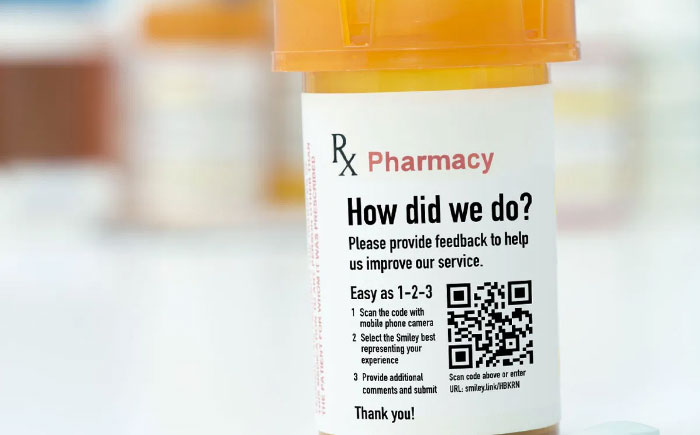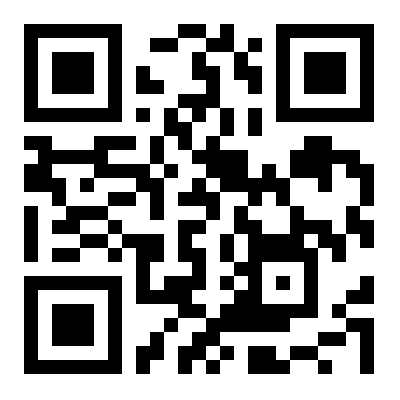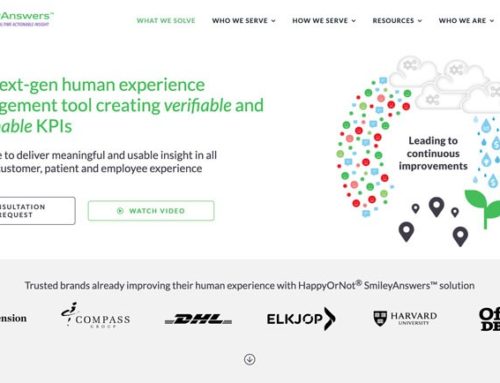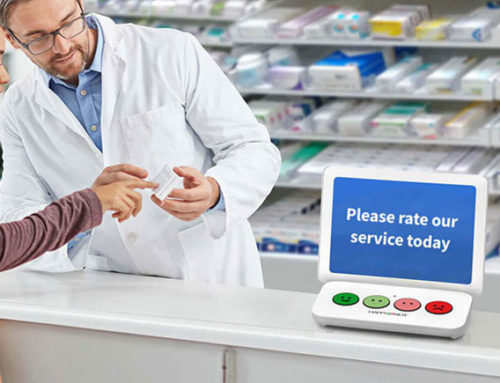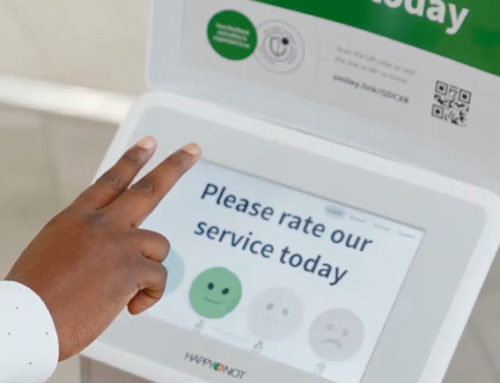In the early 1990’s, the QR (Quick Release) code was introduced by DENSO WAVE (a division of the Denso Corporation at the time). It was inspired by those who were using bar codes and wanted more information to be included within a code. The efficiency and usefulness of the QR code allowed it to become popular in Japan beginning in 2002. An important milestone in the history of the QR code was that its developer (DENSO WAVE) would retain the rights but at the same time it declared that they would not exercise them. This allowed the QR Code to be spread quickly throughout the world. As technology has increased, so have the ways that the QR Code has been developed and used.
QR code in feedback
As the mobile phone became more popular and sophisticated, the QR code was introduced into the capturing of customer and employee feedback. Because of the code’s simplicity and low cost, it has become easier to obtain real-time insight into how a person feels about an experience while they are still in the experience. The QR code can be used to capture insight at multiple touchpoints – both physical and digital. With Covid 19 continuing to impact the world, the QR Code has also allowed organizations a touchless way to learn how a person feels about their experience. The QR code can have a question next to it or the code itself can generate a question after it has been scanned.
Human attention and the QR code
When using a QR Code for feedback, it is important that a person sees the code and it is made easy for them to provide their feedback. Having multiple signs and guiding people to the code are essential best practices to increase the amount of feedback. Helping others to make providing feedback as part of their goal-oriented behavior is important in developing habits both for that person and others observing them.
Another important point to consider is the energy it takes to use the QR Code. Using a Smiley Touch or Smiley Terminal is better than QR Codes because there is less friction for a person to provide feedback. The QR code requires a person to get their phone ready (if they have it on hand and have an app that scans a code) and then go through the process of scanning and giving feedback. We as individuals are constantly looking to be efficient with our time and resources. In a world full of advertisements, information, and survey requests, having a system that is simple and easy to use increases the amount of feedback. People want their opinions to be heard. It becomes a trade off with that desire versus the energy required to provide that opinion.
QR codes within a feedback system
Because the cost of making QR Codes is low, there are a lot of companies using it for multiple purposes, including feedback. It is important to be careful in the feedback system you choose for your organization. The QR code is just one part of the whole feedback system. Having good data that can be analyzed along with sharing that data are vital components as well.
What we see in the marketplace are more new players putting a sign up to say they can collect feedback using a QR code. Make sure your organization looks into the other parts of the system (data collection, analyzing, and data sharing) to see how solid each part is. If you are going to invest into a feedback system, make sure it has the strength to capture the information you need and to improve the experiences of those you serve. It takes time and investment to build a solid dashboard and back-end system.
SmileyAnswers and QR codes
As needs change in the marketplace, SmileyAnswers works to help organizations adapt to the changing needs of their customers, patients, and employees. At the beginning of the Covid pandemic, QR Codes were introduced on the Smiley Terminal (Smiley Link). It was a touchless way for a person to provide feedback if they chose not to push a button. QR Codes are now part of the Touchless Feedback (both physical and digital) package that SmileyAnswers provides.
SmileyAnswers can help organizations at both physical and digital touchpoints by using any of the Smileys or by adding QR codes to capture real-time insight. With increased insight along multiple channels, organizations will have a better understanding of the pain points that get in the way and provide negative experiences.
Wrapping it up
QR Codes have been around for over 25 years. They have evolved to be used for multiple purposes – including the capture of customer, patient, and employee feedback. With the Covid pandemic, having more touchless options for feedback has made the QR code a popular addition to feedback systems. With more people having a phone and becoming more familiar with using the apps, the QR code has become more adaptable for customers, patients, and employees.
Unlike the Smiley Touch and Smiley Terminal which use simple to press buttons, QR codes require more energy and need to have attention drawn to them. Using best practices increases the amount of feedback an organization can obtain from the QR code. Having a good system to analyze the data as well as share the date is just as important as having a QR code to capture the feedback. More companies look to get into the feedback space but many lack the investment and resources to have a solid feedback reporting system.
SmileyAnswers can help your organization by capturing feedback at both physical and digital touchpoints. QR codes can be used along with a family of Smileys to obtain real-time insight of customers and employees. With a real-time dashboard, you can be on top of experiences as they occur. Interactive reports and live sharing allows your organization to share the positive feedback to reproduce great experiences and to find pain points to improve negative experiences.
About SmileyAnswers
SmileyAnswers provides real-time actionable insight by utilizing the HappyOrNot® Reporting System. With over a 1 billion feedbacks to date from over 100 countries, the four Smiley’s from HappyOrNot® are providing a voice for customers, patients, and employees to allow organizations to make the positive changes necessary to improve the human experience. With easy-to-use data on a secure online reporting dashboard, performances can be easily tracked to make quick changes from the real-time feedback. The results from these positive changes can be shared to all stakeholders through live sharing and other ways to boost morale, reputation, and the bottom line. Visit SmileyAnswers to learn more on we can work together to achieve positive experiences for your customers and employees.
